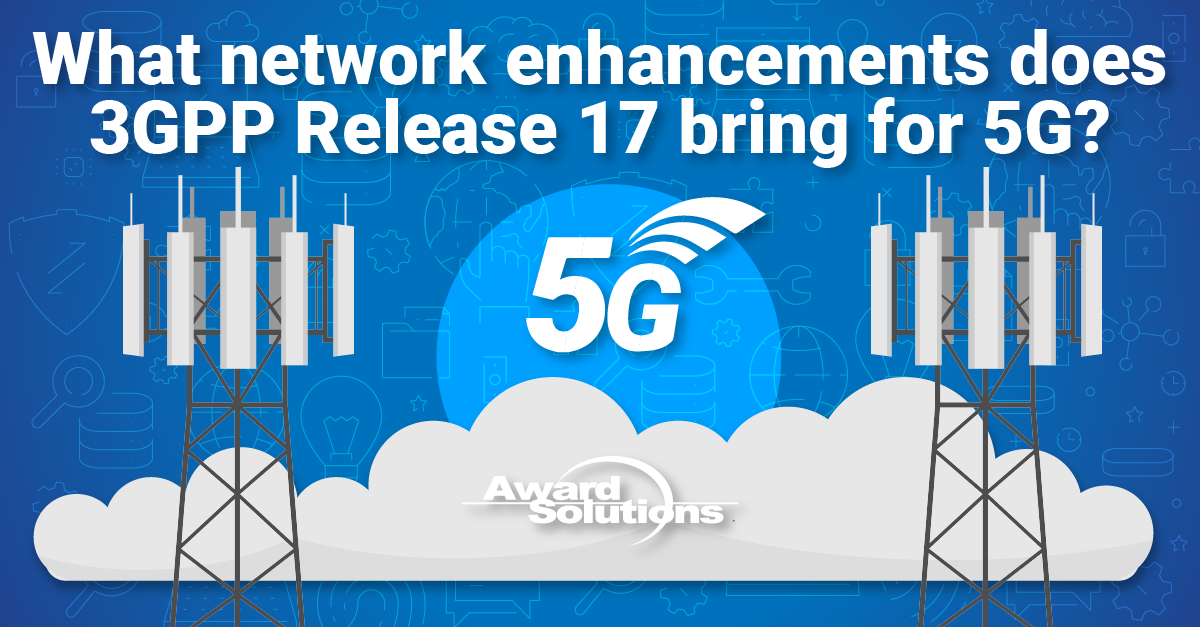
5G Evolution in 3GPP Road Map
5G R15 provided an excellent foundation for the three usage scenarios defined by the ITU: eMBB, URLLC, and mMTC, and focused on improving throughput and efficiency for enhanced Mobile Broadband (eMBB).
5G R16 primarily focused on machine-critical IoT requirements with improved metrics for latency/reliability, 5G NR positioning, and 5G Time-sensitive Networking (TSN).
5G R17 is the third milestone in the 3GPP roadmap to deliver performance boosts to the 5G system. 5G R17 intensifies 5G’s reach into new devices and deployments along with continued performance enhancements of existing 5G features.
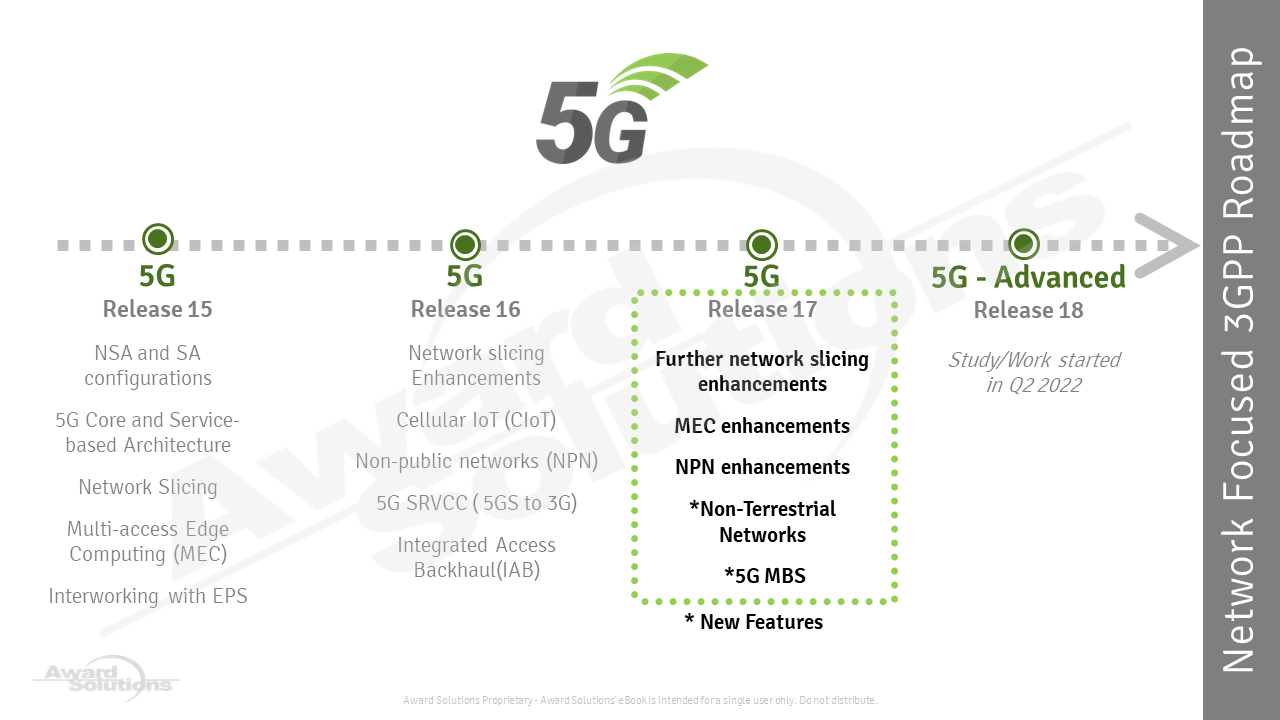
Let us discuss some new network-focused capabilities and enhancements in 3GPP 5G R17.
Satellite-based Non-Terrestrial Network (NTN)
*Extends 5G services where terrestrial coverage is absent
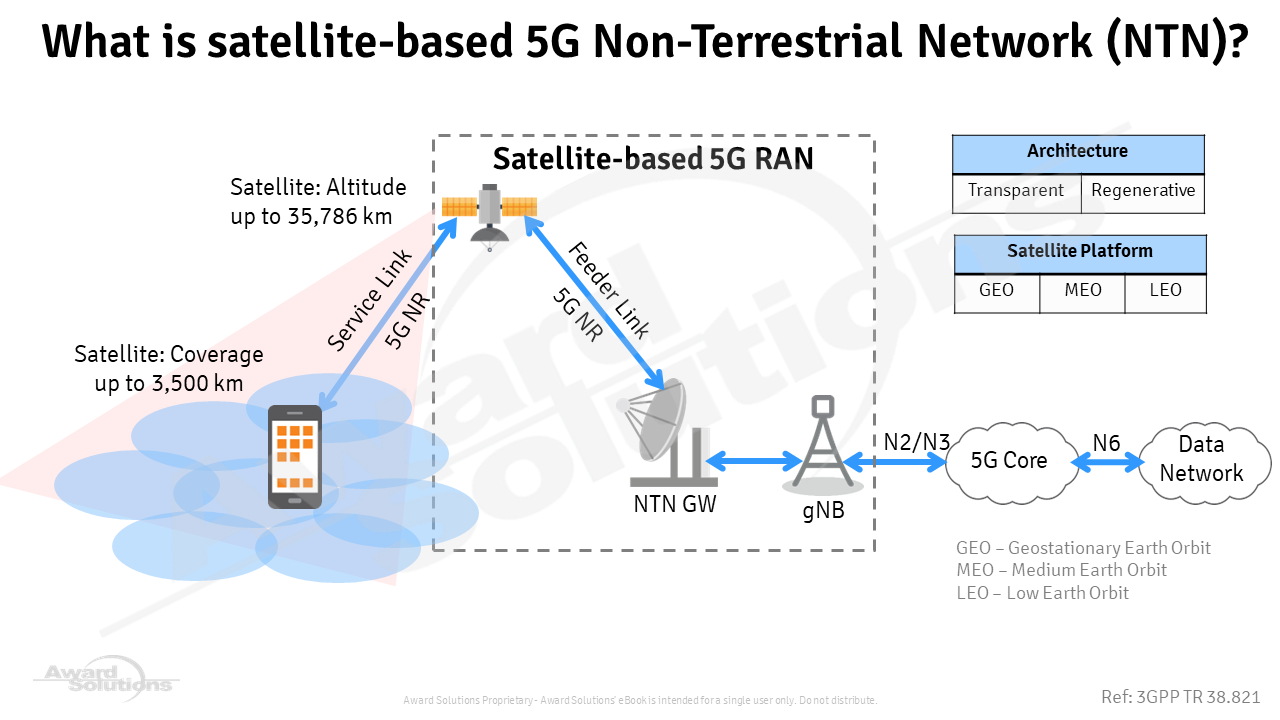
A Satellite-based Non-Terrestrial Network (NTN) in 5G leverages satellite infrastructure, as shown above, to support network coverage over the sea and land where terrestrial coverage is not feasible. NTN devices may be either 3GPP UEs or specific satellite terminals. Satellite-based 5G RAN connects NTN devices to the 5G core. The satellite-based 5G RAN includes satellites, NTN Gateways, and gNBs.
- The 5G NR-based service link enables communication between NTN devices and satellites.
- The 5G NR-based feeder link enables communications between the satellite and the NTN gateway.
- The NTN gateway is a logical node that connects the satellite to the 5G core network.
Based on the functions handled by the satellite in the 5G RAN, the satellite-based architecture can be transparent or regenerative. The transparent payload-based satellite function is limited to radio frequency filtering, frequency conversion, and amplification, whereas the regenerative payload-based satellite performs all gNB functions. Satellites in a satellite-based 5G RAN may be GEO satellites, MEO satellites, or LEO satellites. Each satellite platform differs in its altitude, orbit, and coverage. For example, the satellite-based NTN architecture diagram above illustrates a GEO satellite with a transparent payload.
Satellite-based NTN use case examples:
- Extends 5G services to isolated areas such as mining and isolated villages or provides high data rates to passengers in aircraft.
- Ensures network coverage availability during disasters causing a temporary outage or the destruction of a terrestrial network.
- Terrestrial networks have a backup connection and can offload terrestrial network traffic during busy hours.
5G Multicast Broadcast Services (5G MBS)
*For efficient network resource usage
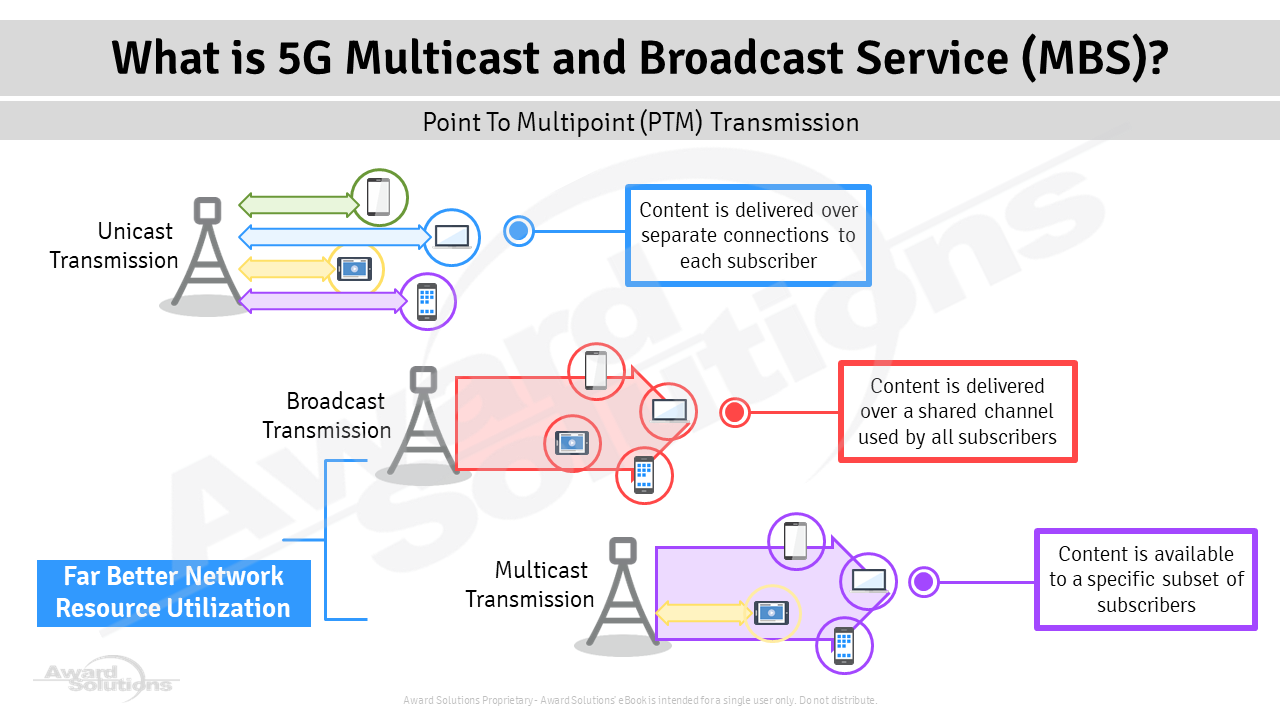
A Multicast Broadcast Services network enables the transmission of the same content (ex: live TV) on the same network resources serving many devices resulting in efficient resource utilization. With 5G R17, new functions like MB-SMF and MB-UPF offer a faster, highly reliable, and low-latency MBS.
5G MBS use case examples:
- Streaming: Broadcasting in venues where people are most likely to view the same content, such as sports events and concerts.
- Public Safety: Enabling group calls, like push-to-talk/view communication, for public safety and commercial use.
- OTA Software Update: Facilitates service providers to perform non-time critical broadcasting, like software update distribution, etc.
Network Slicing Enhancements
*Enables faster access to intended slices for idle/inactive UEs
‘Slice aware cell reselection’ and ‘Slice specific RACH configuration’ features in 5G R17, shown below, enable idle/inactive UEs faster access to intended slices.
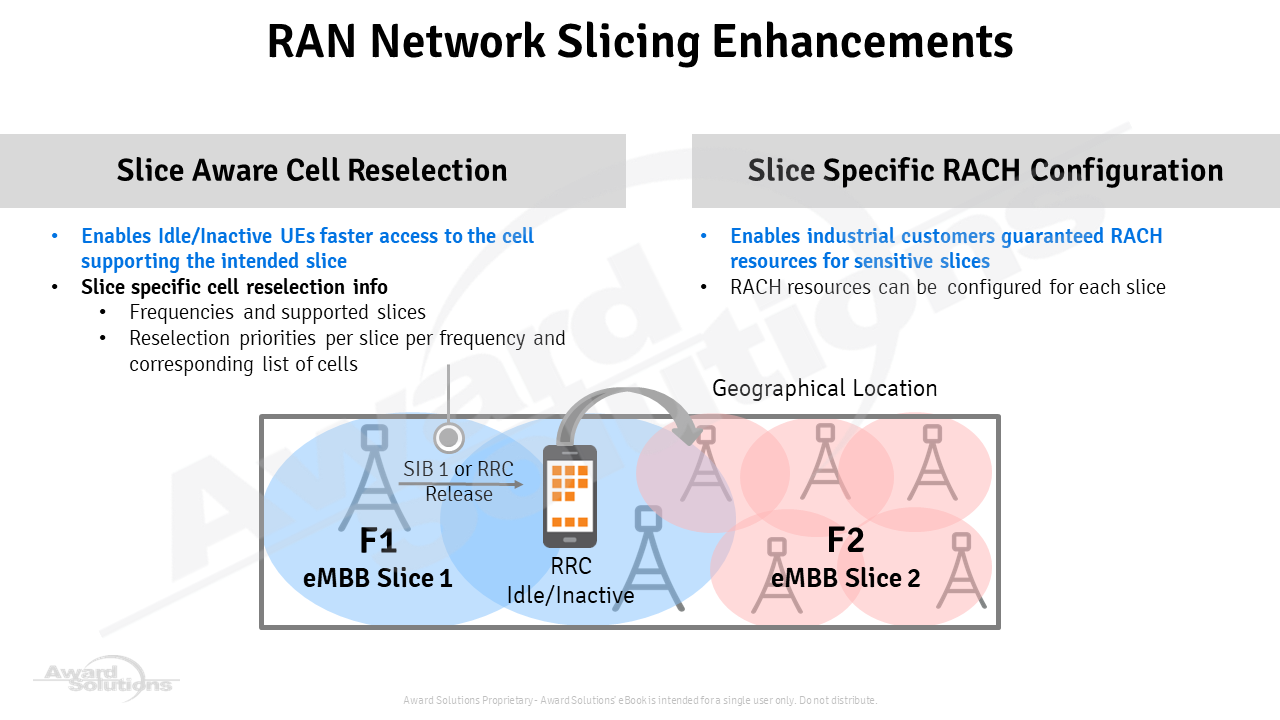
5G R17 has enhanced the charging function (CHF) for charging third-party providers based on the usage of their assigned network slices. In addition, 5G R17 introduces the ‘Network Slice Admission Control Function (NSACF)’ to address ‘Network slicing admission control’ for monitoring and controlling the number of registered UEs per slice and the number of PDU sessions per network slice.
New 5G core network functions support network slicing, MEC, and NPN enhancements in 3GPP R17 shown below.
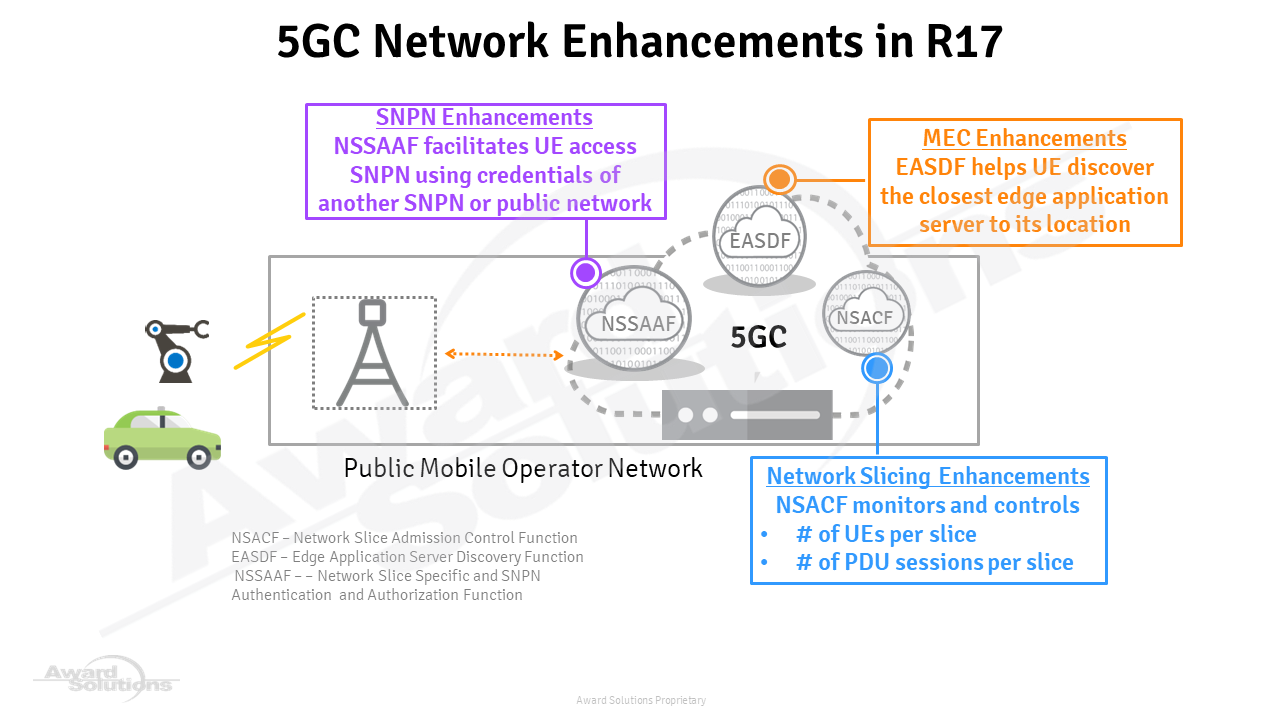
Multi-access Edge Computing (MEC) Enhancements
*Helps UE discover the closest MEC server
5G R17 has introduced a new function called the ‘Edge Application Server Discovery Function (EASDF)’ that helps the UE discover the closest available edge application server to its location. The EASDF acts as a DNS (Domain Name Server) resolver to the UE and can complement the DNS queries with UE location-related information. The EASDF enables the DNS to resolve the application server close to the UE location.
Standalone Private 5G Network Enhancements
*To support neutral host deployment
5G R17 extends support to neutral host deployment by facilitating UE access SNPN (Standalone Non-Public Network) with public network credentials or another standalone private 5G network in addition to its credentials. In addition, 5G R17 has introduced a new function, ‘Network Slice Specific and SNPN Authentication and Authorization Function (NSSAAF),’ to support neutral host deployment.
